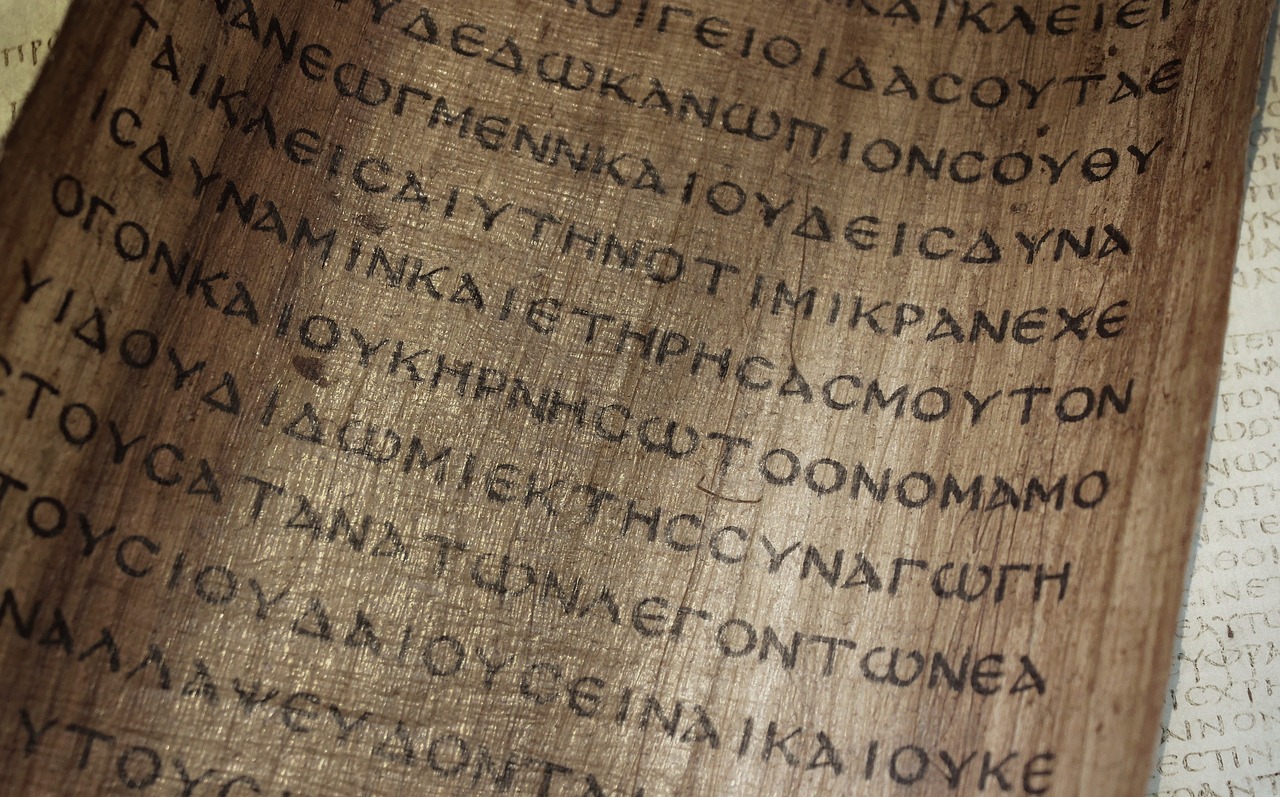Blog
Bulletin Articles
The Incognito Messiah
Monday, February 17, 2020
In this week’s reading, we begin to encounter what is one of the most surprising themes of the gospels. As Mark 2:34 reports, “[Jesus] healed many who were sick with various diseases and drove out many demons. And He would not permit the demons to speak, because they knew Him.” Lest we think that this spiritual gag order is confined to demons, consider a text that will appear in our reading in several weeks, Mark 1:44. There, after cleansing a leper, Jesus tells him, “See that you say nothing to anyone.”
The leper ignores Him, but that’s hardly the point. It’s clear that Jesus, who later tells His followers to preach the gospel to every creature, is doing the best He can to suppress the truth about His identity. What on earth is going on?
In order to understand this, we need to understand the urgent nature of Jesus’ ministry. Today, we think of someone who obeyed the gospel three years ago as a new Christian--if not a babe in Christ, at least a kindergartner in Christ! However, the entirety of Jesus’ ministry was only about three years long.
Some of His disciples had been disciples of John; others were observant Jews. Still others (at least Matthew, maybe more) had been irreligious. Regardless of where they began, though, none of His followers were prepared for the transformation in their thinking that the gospel demanded. They spent three years trying to drink from a spiritual fire hose!
Throughout His ministry, Jesus displays a painful awareness of how much His disciples have to learn and how little time He has to teach them. It’s not hard to hear the impatience in His voice when He says to them in Mark 8:21, “Don’t you understand yet?” Come on, people! We don’t have time for your hard-heartedness!
Three years proved to be enough time to get the job done, even if all the disciples crater pretty spectacularly when Jesus is arrested and crucified. One year, though, or even two? It seems likely that Jesus’ ministry lasted for three years because He knew that it was the minimum amount of time that it would take for Him to prepare His disciples. Jesus could raise the dead instantaneously, but changing hearts required three years of frustrating work (which is perversely reassuring to those of us who are in the heart-changing business!).
Those three years come to an end, of course, when the leaders of the Jewish nation decide that Jesus is an existential threat to them and must be killed. They didn’t come to this conclusion on their own. Jesus provoked them into it by raising Lazarus and challenging their authority on the very grounds of the temple itself.
It was vitally important for the chief priests to decide to kill Jesus, but it was just as important that they not reach that decision too early. If they did, it would have cut into that vital time He needed to teach His disciples. I don’t think they could have killed Jesus early, but they certainly could have made it impossible for Him to teach publicly.
However, if the chief priests are deluged with reports of a prophet whom even the demons proclaim to be the Son of God, they might well move early. Jesus, then, forbids them to speak not because the message is wrong, but because the time isn’t right. He doesn’t want the narrative to spin out of His control.
Rather than being irrational, then, Jesus’ desire to conceal His identity makes perfect sense. Not surprisingly, the Man who does all things well is able to keep the leaks to a minimum, to give Himself the time He needs to accomplish His mission. Today, we are able to hear the gospel because Jesus kept too much of it from being proclaimed too soon.
For God so Loved the World
Monday, February 10, 2020
John 3:16 is surely the most well-known verse in the Bible, with even Matthew 7:1 running a close second. Most Christians are aware that the world’s understanding of the latter is dramatically off-base, but I think that even when it comes to the former, we miss the point a little bit.
The problem is the word “so”. Typically, we read that as “so much”, as an expression of the intensity of God’s love. Thus, we come away from the verse with the idea that God’s sending of His Son reveals the depth of His love for us.
I think that’s true, but it’s not really what Jesus is saying. The usual meaning of houtō, the Greek adverb translated as “so”, is not “so much” but “in this way”. The first appearance of the word in the New Testament is Matthew 1:18, which begins, “Now the birth of Jesus Christ took place in this way.”
The KJV and all the translations that followed it weren’t wrong to translate houtō as “so”. In English, “so” can mean “in this way”. However, in the context of John 3:16, “so” introduces an ambiguity that usually is misunderstood.
Jesus, then, isn’t saying, “God loved the world so much that He sent Me.” He’s saying, “God loved the world by sending Me.” Of all the major translations, I think the CSB is alone in capturing the meaning here (“For God loved the world in this way. . .”).
This is a subtle distinction, but I think it reveals something significant about the love of God. This cornerstone verse of Christianity is telling us not that God loves us intensely (though He does), but that God loves us by acting.
When we are called upon to imitate the love of God, then, it is love expressed in action that we should be imitating. By contrast, much of the self-described Christian world gets hung up on feelings here: “I just love God so, so much!”
Well, that’s nice, I guess, but how is your love for God evident in the way you live? For that matter, how is your love for your brother and your neighbor evident in the way you live? There are an awful lot of folks out there who will shout their love for God to the rafters on Sunday morning then spend their week wallowing in selfishness and sin. That is not the way in which God loved the world!
Instead, love that is like the love of God always reveals itself in service and sacrifice. Maybe it comes from somebody who doesn’t get all teary-eyed during the Lord’s Supper every week, but every week, they’re out there tending to the needs of others. Love that meets our criteria for emotional intensity is neither here nor there. If you do get all teary-eyed during the Lord’s Supper, that’s fine too. What matters is love that manifests itself in a transformed life.
Chronology in the Gospels
Monday, February 03, 2020
In our reading this week, we will encounter the story of Jesus cleansing the temple in John 2:13-17. In one way, this is a rare Johannine connection with the Synoptic Gospels. Matthew, Mark, and Luke all also record the temple-cleansing story.
However, the three Synoptics record the cleansing of the temple as having taken place during the last week of Jesus’ life. John, by contrast, places the narrative very early in his account of the ministry of Jesus. What gives?
Some have suggested that Jesus actually cleansed the temple twice: once at the beginning of His ministry and once at the end. I think this is unlikely. When Jesus drove out the moneychangers, the chief priests understood it—correctly—as a challenge to their authority. It led directly to His arrest and crucifixion. Such a dramatic gesture would not have escaped retribution early in His ministry either, and it’s at odds with Jesus’ own efforts to conceal His identity and mission until the hour has come.
Instead, the true answer is both simple and revealing. John records the same event as the Synoptics in a different place because precise chronology was less important to writers 2000 years ago than it is to us. Today, when we open a biography, we expect the biographer to take us through the life of his subject in consecutive order. If they start hopping around instead, we get confused.
However, these cultural expectations lead us astray when it comes to the gospels. All four Evangelists use a loose chronology. They put birth narratives at the beginning, the crucifixion toward the end, and the resurrection at the end. Luke, the only Gentile of the quartet, and (so far as we know) the most educated, cares more about chronology than that. In Luke 1:3, he expresses his determination to write “an orderly account” (ESV) or “in consecutive order” (NASB).
The other three writers, by contrast, are perfectly willing to move material out of chronological sequence in order to make a thematic point. Matthew collects all of Jesus’ parables of the kingdom in Matthew 13 in order to, among other things, illustrate the disciples’ growth in comprehending those parables. Mark records the story about blasphemy of the Holy Spirit much earlier than it happened, in Mark 3:22-30, as commentary on the unbelief of Jesus’ family.
Much the same thing is going on with John’s temple-cleansing account. We need to read it in parallel with the other narrative of John 2, the story of Jesus turning water into wine. John is using both as a preview of his defense of Jesus’ divinity, giving us a hint about what kind of Messiah we should expect. Jesus will be someone who transforms, but He also will be someone who confronts, cleanses, and purifies. Both themes will be prominently on display through the rest of John’s gospel.
It’s important for us to understand this for two main reasons. First, it should remind us of the dangers of reading first-century narratives through 21st-century eyes. This mistake is most obvious in the skeptics who deny the historical validity of the gospels because they don’t follow our society’s historiographic rules, but it can be a problem for believers too. When we assume that a Bible author writes something for the reasons that we would have written it, that assumption often will lead us astray.
Second, it should open our eyes to the intricacy of the gospels. Many Christians think of them as “books of stories about Jesus”, and they are that, but they are also much more than that. As Jesus did with the parables, the gospel writers are telling particular stories and arranging them in a particular order to convey spiritual truths to those with ears to hear.
Matthew, Mark, Luke, and John aren’t going to spoon-feed us like Paul does. They’re going to give us a starting point for reflection and expect us to figure it out. Figuring it out isn’t easy, but the more we look, the better we will understand, and the more we will grow.
The Coming Judgment
Tuesday, January 28, 2020
When we study the Bible, it’s easy for us to read it through 21st-century eyes and forget that it describes first-century events. Things that are not particularly important to us today often were very important to them, and we can find ourselves overlooking significant Scriptural themes because they aren’t relevant to us.
Consider, for instance, the ministry of John the Baptist as presented in Luke 3. It is certainly about preparing the way for Jesus, which we commonly recognize. However, to an equal extent, it is about warning the people that they need to repent because of the judgment that is coming. “Even now the axe is laid to the root of the trees,” John warns in Luke 3:9. “Every tree therefore that does not bear good fruit is cut down and thrown into the fire.”
We might be inclined to read this as a generic warning about the consequences of disobedience, but it is anything but. The fire here is not the fire of hell—at least, not directly. Instead, it is the fire of God judging the physical world once again. We see similar language in Isaiah 29:6, where, like John, Isaiah is warning God’s people to fear the fire of His judgment.
Isaiah’s prophecy was fulfilled in the Assyrian invasion of 701 BC (another event which we do not properly appreciate), and John’s prophecy would be fulfilled when the Romans crushed the Great Revolt of the Jews in 70 AD. Just as the former was “a day of the Lord”, so too would the latter be. God would judge His people for their sins, particularly the sin of betraying and murdering the Messiah whom He had sent.
Even though it is always offstage, the fall of Jerusalem to the legions of Titus is one of the central events of the gospels. We can’t understand the ministry of John without bearing it in mind, and to a large extent, we can’t understand the ministry of Jesus either.
Paul tells us in Galatians for that the Son came in the fullness of time, but there is also a sense in which He came in the nick of time. As was so often the case in the Old Testament, the sons of Jacob were on a collision course with disaster, and like the prophets of old, Jesus came to attempt to turn them aside: from their hypocrisy, from their self-righteousness, and from their conviction that the kingdom of God meant earthly dominance for His people. Many of the Lord’s calls to repentance that we read generically are, like the warnings of John, specifically about the dangers of opposing Rome.
Fundamentally, the Old Testament is a story of failure. The Israelites received the Law, broke it, and did not repent even in the face of predictions of doom. During the ministry of Jesus, the tragedy will be played out one last time. Despite all of His wisdom and power, the Jews will choose death instead of life. Their leaders will choose King Caesar over the King of heaven, only to be destroyed by Caesar for their faithlessness 40 years later.
Out of this disaster, much good would spring, especially for us. Without the cultivated olive branches being broken off, we could not be grafted in. However, neither should we forget the violence and the significance of the breaking.
Mary's Testimony
Monday, January 20, 2020
In Luke 1:1-4, Luke claims to be engaged in the practice of inspired history. He hasn’t accumulated his knowledge of Jesus via direct download from the Holy Spirit, nor is he an eyewitness to the events of the gospels. Instead, he has consulted those who were eyewitnesses and pieced their stories together into his narrative.
Luke most likely carried out his investigative work between 57 and 59 AD. So far as we can tell, he was neither a Jew nor a native of Palestine. Instead, he appears to have joined Paul when the apostle passed through Troas toward the beginning of the second missionary journey (note the shift between “they” and “we” in Acts 16:8-10), stayed in Philippi when Paul left (“they” again in Acts 16:40), left Philippi with him toward the end of the third missionary journey (“we” in Acts 20:6), and remained with him through the end of the book.
Unless Luke had other travels we don’t know about, then, the only significant chunk of time he spent in Palestine was when Paul was imprisoned in Caesarea during those years in Acts 24. If he had circulated through the Galilean and Judean churches at that time, he would have had no trouble finding disciples who remembered the momentous events of Jesus’ ministry, 30 years before.
Scholars, most notably Richard Bauckham in Jesus and the Eyewitnesses, have argued that Luke cited his sources by naming them in his narrative. This explains, for instance, why we know the identity of one of the disciples whom Jesus met on the road to Emmaus (Cleopas) and not the other. Cleopas was the disciple whom Luke interviewed. Simon the Pharisee in Luke 7 is probably another source.
However, this pattern breaks down during the birth and childhood narratives of Luke 1 and 2. All the named characters are fairly major (and so would be named whether witnesses or not), and most of them (Zechariah, Elizabeth, Joseph, Simeon, and Anna) are surely dead by the time of Luke’s inquiries. Where, then, is Luke getting his information?
Our best clue appears in Luke 2:19 and Luke 2:51. Even though there is no particular narrative reason for Luke to do so, he pauses twice to note that Mary, Jesus’ mother, treasured up these events in her heart. Of all the characters in the story, Mary is the most plausible (and sometimes the only possible) eyewitness. If, as is commonly believed, she was a teenager when Jesus was born, she would have been in her seventies during Paul’s Caesarea imprisonment—a long life for someone in that time, but certainly not impossibly so.
Indeed, if Mary was still available at the time of his search, Luke would have sought her out above almost all other eyewitnesses—precisely because her testimony was unique. If Mary is Luke’s source in Luke 1-2, his statement that she stored these things up in her heart shifts from being irrelevant to being vitally important. Like an ancient veteran who still remembers battles from World War II, Mary would have remembered the events surrounding her Son’s birth all her life, and she would have been happy to share her testimony with the Gentile historian.
Skeptics like to dismiss the early events of Luke as a pastiche of myth. However, we have good reason to believe otherwise. Luke’s words imply that rather than being sourceless speculation, his account comes from the best source of all—the young virgin who spent nine months carrying the Son of God under her heart.


